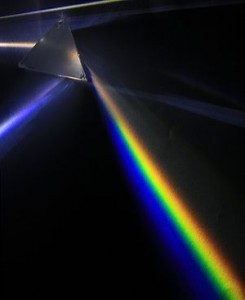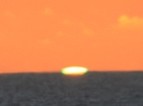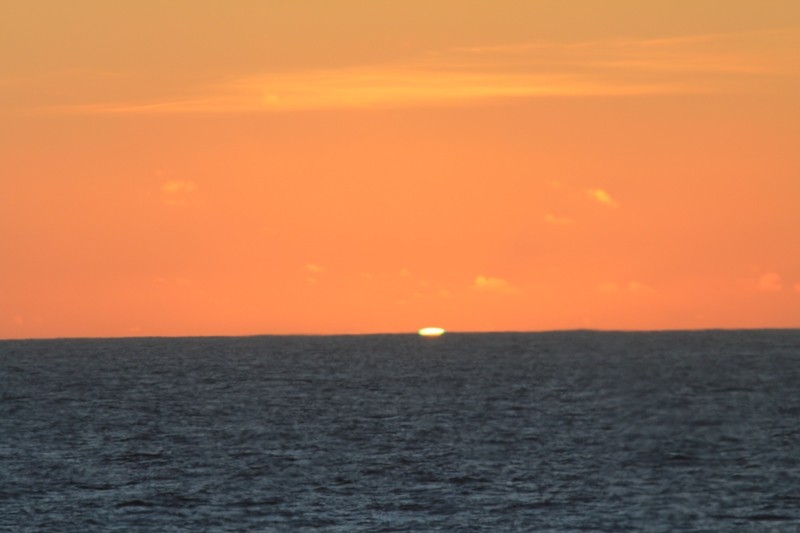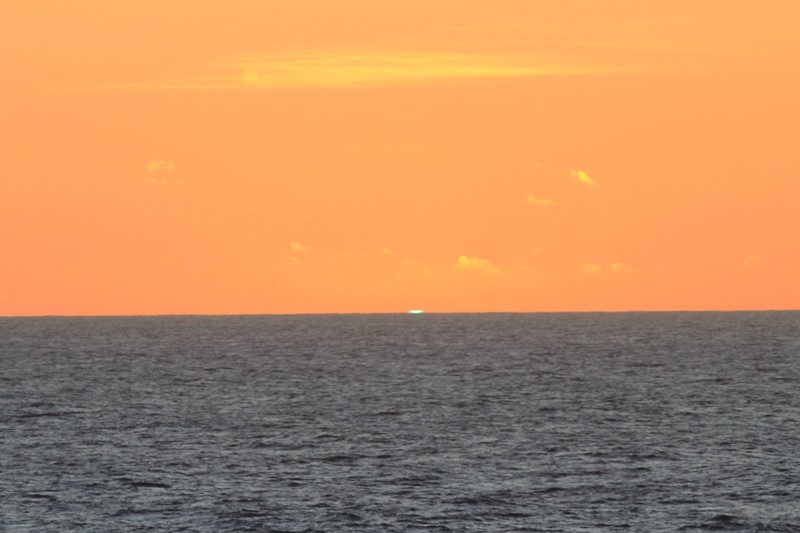A Rare Treat – The Green Flash
Sunday night after successfully recovering a gravity core about 42 miles north of the equator, conditions were right for a rare treat – the green flash.
By Lee Dortzbach,


I work as the Chief Mate aboard the Research Vessel Marcus G. Langseth for this cruise and stand the 4 to 8 watch. Every morning as I get the ship where the scientists need to be, I watch for the sun to rise. Every evening I watch for it to set. There are some days when clouds are around and make for some great sunsets. Other days we cannot see the sun through all the clouds.
Sunday night after successfully recovering a gravity core about 42 miles north of the equator, conditions were right for a rare treat – the green flash. There were clear skies around the Sun, good visibility and a clear horizon. When I first heard about the green flash, I thought it was something that was noticeable and quick. Over the last decade, I have seen that it is not a sky-covering flash (as depicted in the recent Pirates of the Caribbean: At World’s End), but a short lived change of the sun’s light as it sets.
It happens because of refraction of light through the Earth’s atmosphere. The white light of the sun is broken into different wavelengths of visible light we recognize as different colors. The red and orange cover most of the sky, the yellow of the sun gets more orange-like as the sun sets and the blue and violet get scattered too much for us to see.
So what about the green? It too is scattered most of the time until the tip of the Sun is barely visible above the horizon. The Sun’s yellow light is refracted more and so the ‘yellow’ sun sets below the horizon before the ‘green’ sun. The sliver of green becomes visible to our eyes only when the bright yellow light is fading during the sunset. It starts from the bottom up in a horizontal band that grows a little taller as the sun sets. On a few occasions I have seen a sliver of blue/violet light below the green (a challenge against a blue ocean and a greater treat). In the latitude of the United States, it lasts about 0.7 seconds. Sometimes it can last up to 4 seconds. Ours lasted between 1 and 2 seconds. Definitely a flash compared to the core we just recovered!
For more information and other pictures of green flashes, click here.
Lee Dortzbach graduated from the U.S. Merchant Marine Academy with a B.S. in Marine Transportation in 2000. He has been around the world on several different ships over the last decade, including two oceanographic research vessels. He lives in landlocked Utah.


